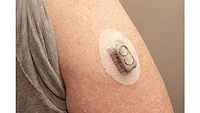Demand for Wearable Devices to Surge through 2021
Study reports that wearable devices will help mobile operators drive more than $12 billion in service revenue by the end of 2021.

While wearable technology has been utilized in vertical sectors such as the military and the healthcare industry for many years, ongoing advances have triggered a major resurgence of the concept, particularly among the consumer community, according to a report from InForGrowth. Key enabling technologies (e.g., low-cost sensors, wireless connectivity, active materials, and energy) have converged to make wearable technology mainstream.
Wearable device shipments will grow at a compound annual growth rate (CAGR) of approximately 22% between 2018-2021. By the end of 2021, wearable devices will represent a market worth $45 billion, with over 250 million annual unit shipments. In terms of annual wearable device unit shipments, the top five vendors (Apple, Xiaomi, Fitbit, Samsung, and Garmin) collectively account for more than 55% of the market.
Driven by the ability to interconnect with key modern trends of healthcare, fitness, messaging, and socialization, the wearable technology ecosystem is attracting significant levels of interest. Companies as varied as smartphone OEMs, mobile operators, health insurers, and retailers are circling the ecosystem alongside tiny startups.
Cellular connectivity and associated advanced capabilities–such as VoLTE (Voice over LTE)–are increasingly being integrated into consumer-oriented wearables such as smartwatches. The study reports that wearable devices will help mobile operators drive more than $12 billion in service revenue by the end of 2021, following a CAGR of approximately 36% between 2018-2021.
As wearable technology vendors seek to minimize dependence on hardware sales, new business models are continuing to gain popularity. These range from corporate wellness programs to sports performance analytics.
To learn more about the report, visit https://inforgrowth.com.
Looking for a reprint of this article?
From high-res PDFs to custom plaques, order your copy today!





.webp?height=200&t=1685029884&width=200)

